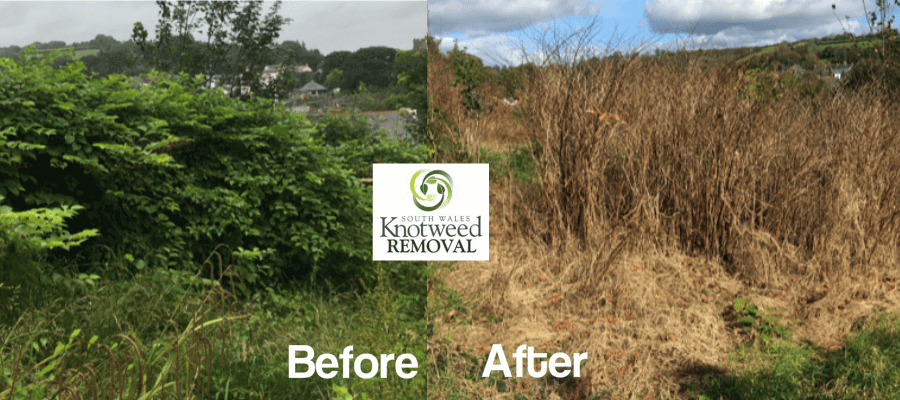Japanese Knotweed: What Are Your Responsibilities for Removal
Every year, Britain spends around £1.7 billion trying to combat the problem of invasive non-native species.
The introduction of non-native plants and wildlife can seriously impact biodiversity and have lasting implications for Britain’s ecology. Here, we will look at Japanese knotweed – a pervasive and prevalent garden weed.
If you have knotweed growing on your land, there are certain legal responsibilities you have to live up to. This guide will help you identify this invasive weed and inform you of the eradication and removal procedure.
Read on to find out your responsibilities for removing Japanese knotweed.
What Is Japanese Knotweed?
Japanese knotweed is among the most notorious and widespread of all the invasive weeds in Britain. It is a tall, fast-growing Japanese plant with bamboo-like stalks and small white blooms. It was once grown as an ornamental border perennial. However, it quickly turns into an aggressive weed.
Knotweed is a rhizomatous perennial plant. This means it sends shoots downwards and outwards, sprouting new roots and stems, allowing it to spread uncontrollably if left unmanaged.
The plant is fast-growing and clump-forming, with a root depth of around 3 meters. It has also been known to grow through tarmac roads and other hardstanding surfaces.
Japanese Knotweed History
Japanese knotweed was first introduced to Britain in the 1800s. Seen as a striking and exotic ornamental plant, it quickly grew popular among Victorian gardeners.
It’s not hard to see why this plant was once considered desirable to have in your garden. Its bright red roots and heart-shaped leaves can grow up to 2cm per day in the spring and summer before appearing to die off in the winter.
Before long, the destructive nature of the plant became apparent. But by this time, Japanese knotweed was deep-rooted and here to stay. The Wildlife and Countryside Act 1981 made it an offence to allow Japanese knotweed to grow in the wild.
Identifying Japanese Knotweed
Japanese bindweed can be found all around Britain. Some of the worst affected areas are southwest England and south Wales. However, new infestations are cropping up every day, with Japanese knotweed becoming a more and more common invasive weed across the country.
If you suspect you could have Japanese knotweed growing on your land, it’s important to identify it as soon as possible. That way, you’ll be able to act before it becomes a more serious problem.
You can use this checklist to identify Japanese knotweed on your property:
Flowers
Japanese knotweed blooms in the late summer, usually around August. The distinctive white flowers are small and grow in long plume-like, branching clusters from the leaf axils on the stem.
Leaves
You can identify Japanese knotweed by its broad, shovel or heart-shaped leaves. The bright, rich green leaves die back in the winter and begin to sprout again in early spring. They are around 20cm long.
Stems
As a rhizomatous perennial plant, Japanese knotweed has specially adapted stems that send out roots, allowing it to spread rapidly. The stems and roots of the plant are green, often with red shoots and flecks.
If you’re still not sure whether you have Japanese knotweed growing on your land, check out this in-depth guide by our SW Knotweed Removal specialists.
What’s the Risk?
Japanese knotweed is a destructive invasive weed, growing up to 2cm per day. Its 7ft root render can cause damage to roads, foundations, and underground plumbing and electrical utilities. Above ground, Japanese knotweed can quickly take over a property’s garden if left unchecked.
Moreover, allowing knotweed to grow wild damages the ecosystem and can have serious implications for local flora and fauna. Japanese knotweed eradication is crucial to protect local environments and maintain biodiversity.
If you have Japanese knotweed on your land, it’s your responsibility to prevent it from causing damage to property and the environment. Let’s take a look at where the law stands on your removal responsibilities.
Japanese Knotweed and the Law
It is not against the law to have Japanese knotweed growing in your garden. However, it is your responsibility to control this invasive weed in order to avoid an infestation in your neighbourhood.
It is an offence to contaminate the environment with Japanese knotweed by failing to contain it within your property. If knotweed originating from your property causes damage, you could be prosecuted.
It is your obligation to inspect your garden for Japanese knotweed if you are selling your house. You are required to disclose whether or not your property is contaminated with Japanese knotweed and, if so, give seek a removal plan from a professional company.
Trying to remove Japenese knotweed yourself is difficult and unmanageable for larger plants and requires a special waste licence to dispose of cuttings. Our SW Knotweed Removal specialists are equipped to tackle the root of the problem and ensure complete eradication.
Control and Eradication – Your Responsibilities
 Japanese knotweed is very difficult for homeowners to control. Trying to dig it up will break off stems and roots, causing the invasive weed to spread further. Similarly, domestic weedkillers can take more than 4 seasons to penetrate the deep-set root system, even then with limited results.
Japanese knotweed is very difficult for homeowners to control. Trying to dig it up will break off stems and roots, causing the invasive weed to spread further. Similarly, domestic weedkillers can take more than 4 seasons to penetrate the deep-set root system, even then with limited results.
Our professional knotweed removal team have access to the tools and equipment to cut eradication times in half and dispose of all waste responsibly.
We will complete a full survey of your property and advise you on the best course of action to deal with your knotweed problem. We can also offer insurance backed guarantees if required.
Eradicating Japanese knotweed from your property once and for all will save you time and money further down the line. Our service is committed to delivering an efficient and complete service from survey to completion.
Japanese Knotweed Removal & Responsibilities Made Simple
So, that is the rundown on your Japanese knotweed removal responsibilities. This invasive weed is a risk to your property and the wider environment.
If you have Japanese knotweed or any other invasive plants on your land, contact us today for a free, no-obligation survey. Our professional team is equipped to ensure a swift and complete removal and eradication service.

Martyn works for Green Leaf Remediation as a marketing specialist. He takes great pride in creating quality content regarding Japanese knotweed.
